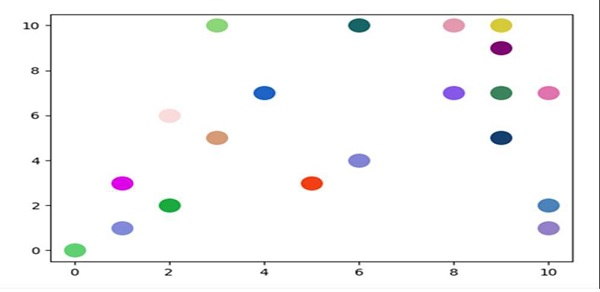
 Data Structure
Data Structure Networking
Networking RDBMS
RDBMS Operating System
Operating System Java
Java MS Excel
MS Excel iOS
iOS HTML
HTML CSS
CSS Android
Android Python
Python C Programming
C Programming C++
C++ C#
C# MongoDB
MongoDB MySQL
MySQL Javascript
Javascript PHP
PHP
- Selected Reading
- UPSC IAS Exams Notes
- Developer's Best Practices
- Questions and Answers
- Effective Resume Writing
- HR Interview Questions
- Computer Glossary
- Who is Who
How to generate random colors in Matplotlib?
To make a custom color, we can create a hexadecimal string. From it, we can make different sets of color representation and can pass into the scatter method to get the desired output.
Steps
Take an input from the user for the number of colors, i.e., number_of_colors = 20.
Use Hexadecimal alphabets to get a color.
Create a color from (step 2) by choosing a random character from step 2 data.
Plot scatter points for step 1 input data, with step 3 colors.
To show the figure, use plt.show() method.
Example
import matplotlib.pyplot as plt import random number_of_colors = int(input("Please enter number of colors: ")) hexadecimal_alphabets = '0123456789ABCDEF' color = ["#" + ''.join([random.choice(hexadecimal_alphabets) for j in range(6)]) for i in range(number_of_colors)] for i in range(number_of_colors): plt.scatter(random.randint(0, 10), random.randint(0, 10), c=color[i], s=200) plt.show() Output
Please enter the number of colors: 20


Advertisements
